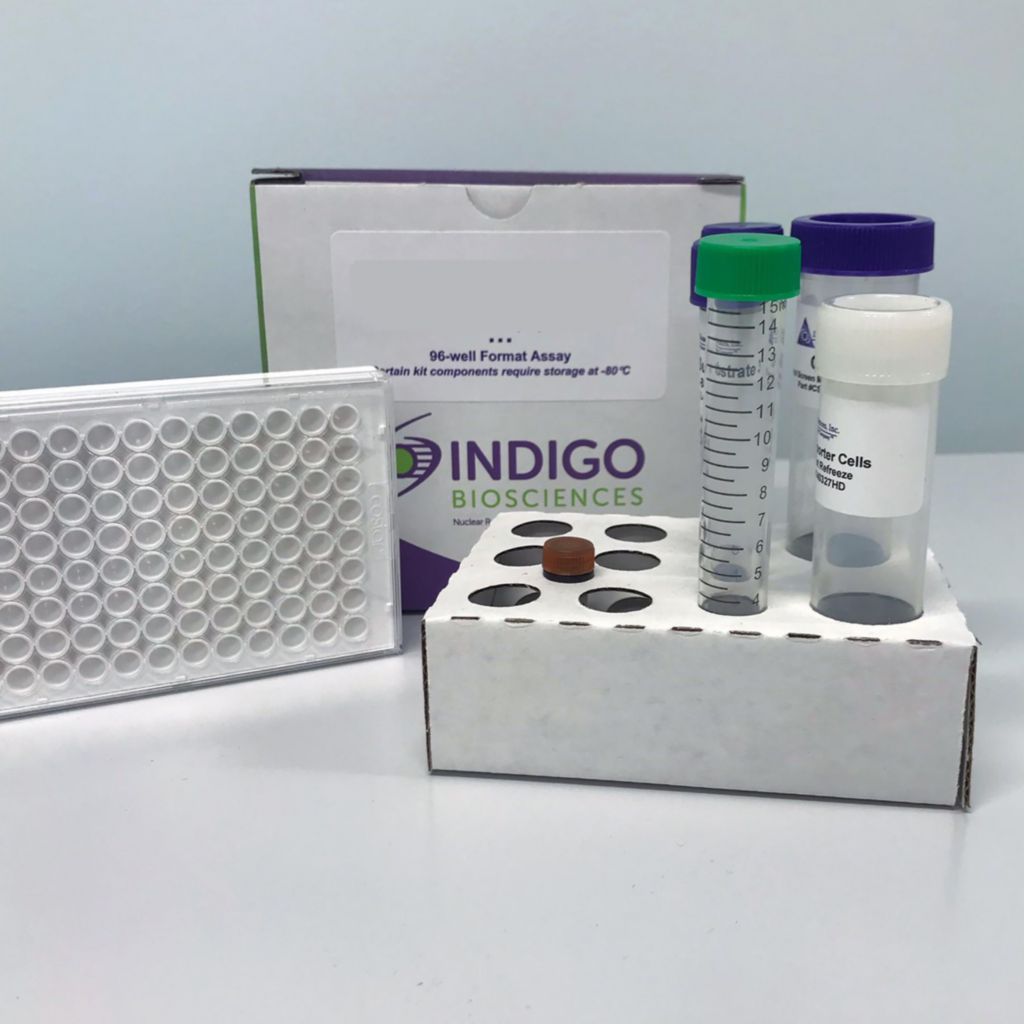Product Description and Product Data
INDIGO’s Human Liver X Receptor Panel (LXR alpha, LXR beta) assay kit is an all-inclusive firefly luciferase reporter assay system that includes in addition to reporter cells for each LXR, optimized growth media, media for diluting test compounds, a control agonist for each LXR, luciferase detection reagent, a cell culture-ready assay plate in strip-well format so that (if preferred) LXR alpha and LXR beta assays may be performed at different times, detailed protocol, and a protocol quick guide. This panel contains sufficient materials to perform 48 LXR alpha assays and 48 LXR beta assays, all in a single 96-well plate format.
Features
Clear, Reproducible Results
- All-Inclusive Assay Systems
- Exceptional Cell Viability Post-Thaw
- Consistent Results Lot to Lot
Product Specifications
| Target Type | Nuclear Hormone Receptor | ||
| Species | Human | ||
| Receptor Form | Hybrid | ||
| Assay Mode | Agonist, Antagonist | ||
| Kit Components |
| ||
| Shelf Life | 6 months | ||
| Shipping Requirements | Dry Ice | ||
| Storage temperature | -80C |
Data
Target Background
Liver X receptor α (LXR-α or LXRα) is a nuclear receptor protein encoded by the NR1H3 gene (nuclear receptor subfamily 1, group H, member 3). The Liver X receptors (LXRs) were originally identified as orphan members of the nuclear receptor superfamily because their ligands were unknown. Like other receptors in the family, LXRs heterodimerize with retinoid X receptor and bind to specific response elements (LXREs) characterized by direct repeats separated by 4 nucleotides.
Liver X receptor β (LXR-β or LXRβ) is a member of the nuclear receptor family of transcription factors. LXRβ is encoded by the NR1H2 gene (nuclear receptor subfamily 1, group H, member 2). The Liver X receptors (LXRs) were originally identified as orphan members of the nuclear receptor superfamily because their ligands were unknown. Like other receptors in the family, LXRs heterodimerize with retinoid X receptor and bind to specific response elements (LXREs) characterized by direct repeats separated by 4 nucleotides.
This Liver X Receptor PANEL of assays utilizes non-human mammalian cells engineered to express the human LXR proteins: LXRα (NR1H3) and LXRβ (NR1H2).
Product Documentation
Also available as a service
